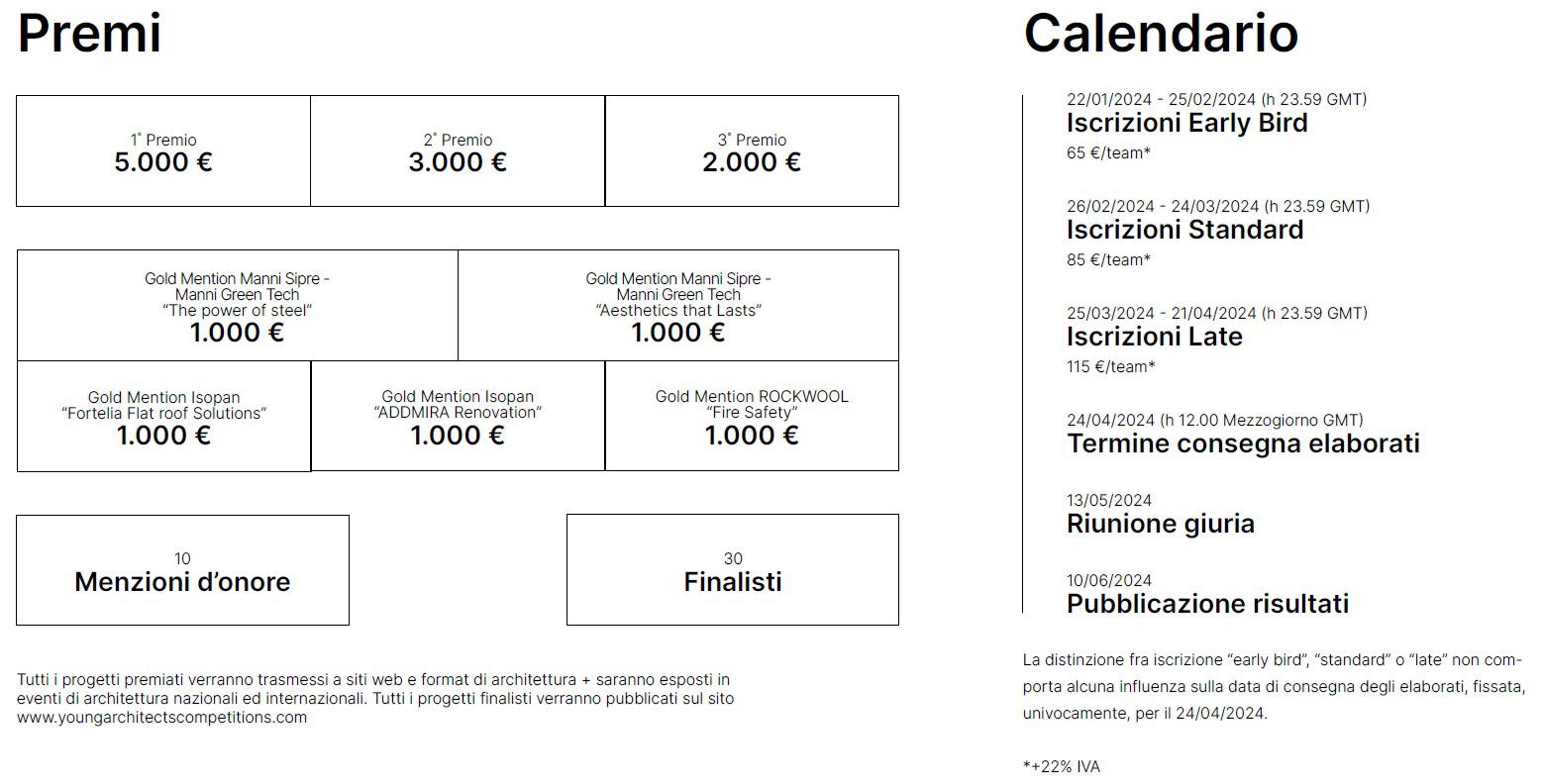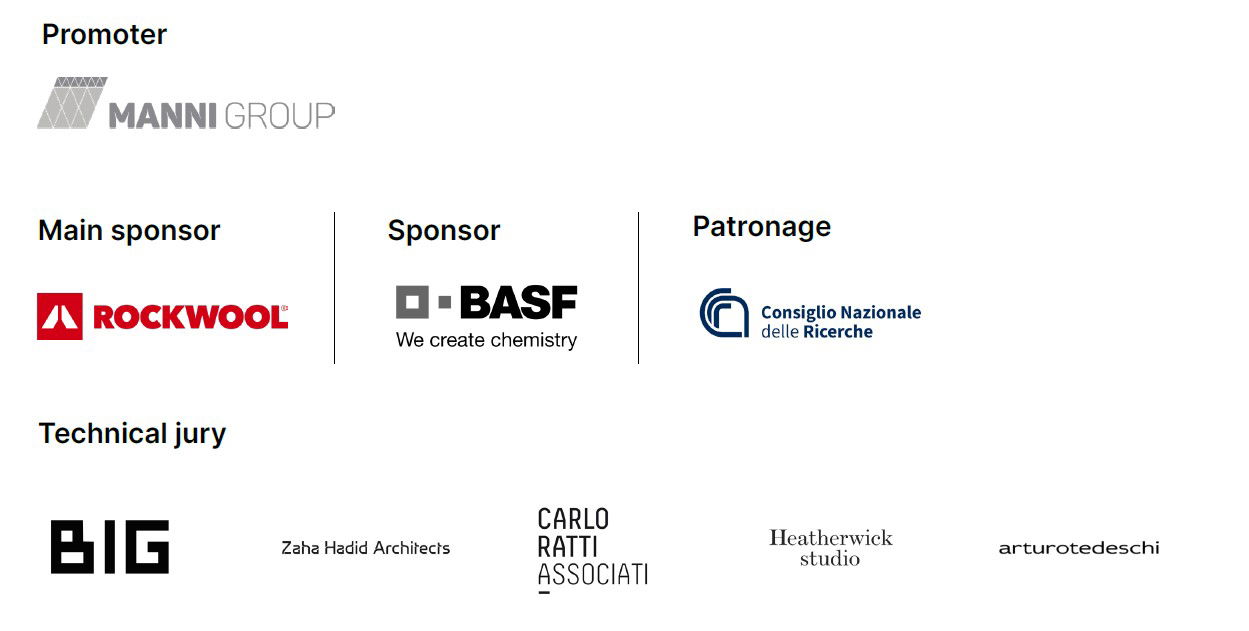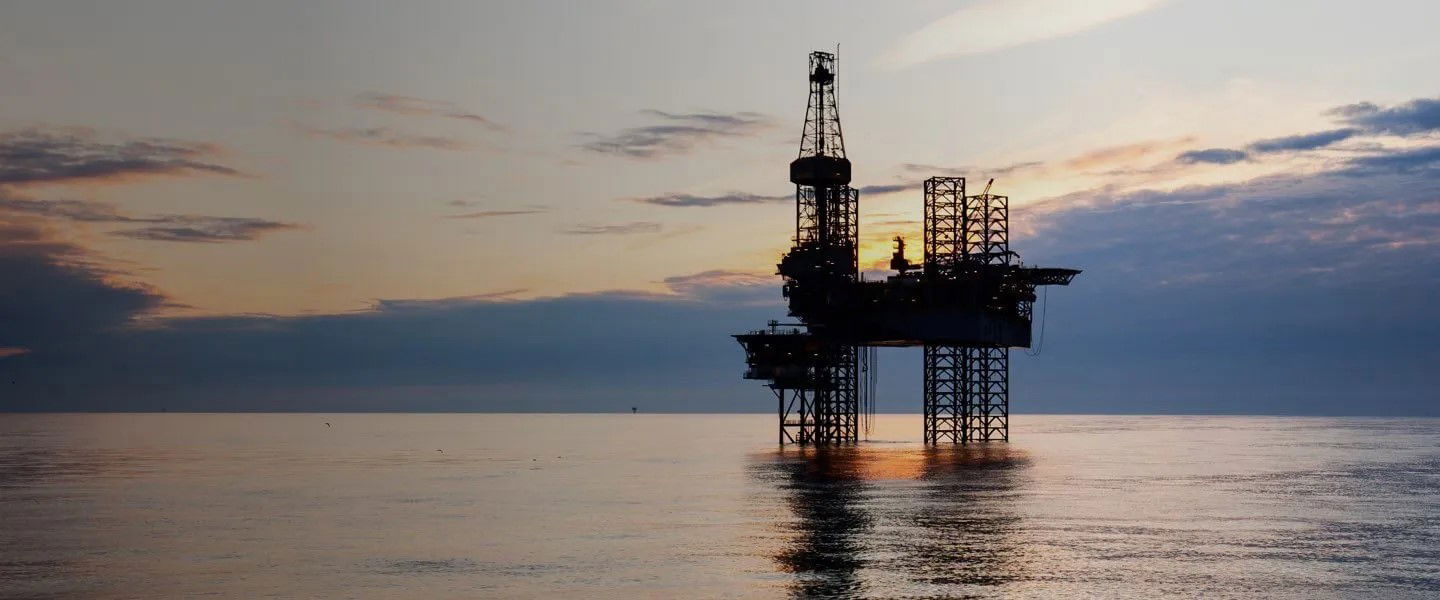FIFTH EDITION OF THE MANNI GROUP DESIGN AWARD IRON ISLAND

Like the wonders of the ancient world, great industrial archaeologies carry a fascination of abandonment, of that mammoth and sublime melancholy that makes them magical in their own ruin and decay.
Iron Island, a collaborative project of Manni Group, CNR-IRBIM, and YAC, investigates the future of off-shore oil platforms in the Adriatic Sea. These majestic structures, symbols of the industrial era, are now astonishing ecosystems of biodiversity. The contest addresses the dilemma of 'decommissioning': should these islands of steel and concrete be removed or repurposed? In an era focused on decarbonization and sustainability, this issue becomes crucial. Iron Island explores how to transform these platforms, once used for oil extraction, into outposts for environmental protection and scientific research. As legislators debate how to manage these structures, they provide refuge to numerous marine species, resembling artificial coral reefs. The challenge is to redefine their role in the environmental context, proposing innovative solutions that respect both the marine environment and human needs. With this goal, the Manni Group Design Award invites architects, engineers, and thinkers to conceive new uses for these platforms, redefining the maritime landscape for a more sustainable future.

JURY
To date, there are 132 offshore mining platforms in the seas lapping the Italian peninsula. 12 of them are inactive. Almost all of these structures (116) are located in the Adriatic Sea, mainly off the coasts of the Italian regions Emilia Romagna, Marche and Abruzzo. The current plan regulating the use of the subsoil for mining purposes, the “Pitesai Master Plan,” plays a key role in defining the future of the platforms. In fact, according to the Plan, all structures located within 12 miles of the coast are situated in an area where new oil or methane deposits cannot be searched for or exploited. For this reason, platforms in this area can continue their mining activities until the resources are exhausted, and then they necessarily must be decommissioned. This implies that, in the near future, 72 of these platforms will have to be decommissioned (namely about 55% of the total). As previously written, the costs of decommissioning procedures are extremely high for the complex operations of removing the structures must be carried out under conditions that do not cause any damage to the surrounding environment. The latter must then be decontaminated in order to be brought to its original state. Subsequently, the removed structures must be transported to specialized centers, which provide for their decontamination and disposal. These are complex, risky and polluting procedures.
The competition will take a model platform as a reference, allowing different research directions: cultural/tourism/entertainment uses or approches that are more in line with climate and/or marine ecosystem monitoring and research functions.












